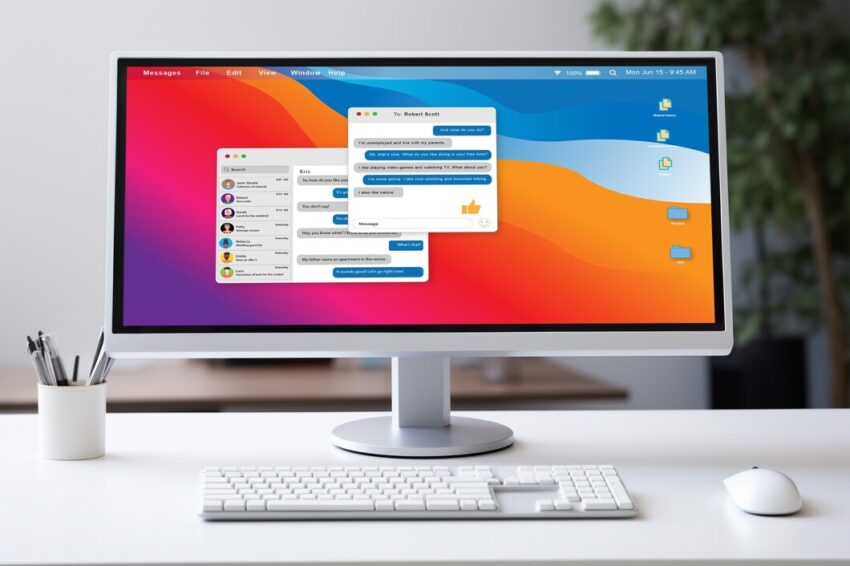In today’s digital age, where technology plays an indispensable role in our daily lives, desktop applications stand as pillars of innovation and functionality. These applications are powerful tools that empower users with versatile, intuitive, and feature-rich experiences. The world of desktop application development is an evolving landscape, embracing advancements, challenges, and endless possibilities. This comprehensive guide delves into the realm of desktop application development, exploring its intricacies, technologies, best practices, and the future it promises.
Understanding Desktop Application Development
Desktop applications, unlike web or mobile applications, run natively on a user’s computer or device. They offer enhanced performance, access to system resources, and a robust user experience. These applications cater to diverse domains, ranging from productivity tools, entertainment, design software, games, and enterprise solutions.
Evolution of Desktop Applications
The history of desktop applications traces back to the early days of personal computing. The advent of Graphical User Interfaces (GUIs) revolutionized the user experience. From the rudimentary applications of the past to the sophisticated, user-friendly software we have today, desktop application development has undergone a remarkable transformation. The progression from standalone applications to networked, cloud-enabled, and cross-platform solutions reflects the dynamic nature of this field.
Technologies and Frameworks
Desktop application development involves various technologies and frameworks. Traditional languages like C, C++, and Java still hold significance. However, modern frameworks and languages such as Electron, Qt, .NET, and Python have gained prominence. These frameworks facilitate cross-platform development, enabling developers to create applications that work seamlessly across Windows, macOS, and Linux systems.
Design and User Experience
The success of a desktop application heavily relies on its design and user experience. An intuitive, visually appealing interface coupled with seamless functionality enhances user engagement. Principles of user-centered design, such as simplicity, consistency, and accessibility, form the cornerstone of creating compelling desktop applications.
Challenges in Desktop Application Development
Developing desktop applications comes with its set of challenges. Compatibility issues across different operating systems, ensuring security, optimizing performance, and handling updates and maintenance are persistent hurdles. Moreover, the need to adapt to varying screen sizes and resolutions adds complexity to the development process.
Best Practices in Desktop Application Development
To navigate these challenges effectively, adhering to best practices is crucial. Adopting an Agile development methodology, conducting thorough testing, prioritizing user feedback, and maintaining clean, well-documented code are essential practices for building robust and user-friendly desktop applications.
The Future of Desktop Applications
As technology continues to evolve, the future of desktop application development holds exciting prospects. With the integration of Artificial Intelligence (AI), Internet of Things (IoT), and virtual reality, desktop applications are poised to become even more immersive and interconnected. Moreover, the rise of cloud computing and edge computing will likely influence the development and functionality of desktop applications.
Empowering Developers
The field of desktop application development is not only about the applications themselves but also about empowering developers. With a myriad of resources, online communities, and developer tools, individuals have the opportunity to hone their skills and contribute to the ever-expanding landscape of software development.
Conclusion
Desktop application development stands as an integral part of the technological ecosystem. Its ability to provide powerful, tailored, and innovative solutions to diverse domains is invaluable. As the landscape continues to evolve, staying abreast of new technologies, adapting to changing user needs, and mastering best practices will be instrumental in crafting the next generation of desktop applications that will shape the future. The journey of desktop application development is an ever-continuing, transformative process, promising continuous innovation and functionality for users worldwide.
Empowering User Experiences: Ebryx Tech’s Desktop App Development Solutions
Ebryx Tech, a leading custom software development company, pioneers the creation of transformative desktop applications. With an unwavering commitment to innovation and quality, Ebryx Tech’s expertise in desktop app development is unparalleled. Leveraging cutting-edge technologies and a team of seasoned developers, they craft bespoke solutions that cater to diverse industries. By prioritizing user-centric design and robust functionality, Ebryx Tech ensures that every desktop application they create not only meets but exceeds the expectations of clients, empowering users with intuitive, seamless, and feature-rich experiences. With a proven track record of excellence, Ebryx Tech stands at the forefront, delivering tailored desktop applications that drive success and innovation for businesses worldwide.
https://ebryxtech.com/our-services/desktop-application-development/


